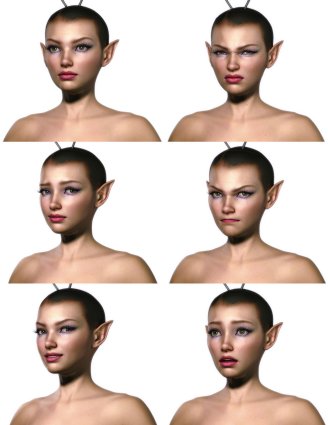GeForceFX: NVIDIA goes Hollywood?
Vertex Shader Unit
Until now, the vertex shader performance was expressed mainly through the number of available shader units (GeForce4 Ti: two/ Radeon 9700 PRO: four). In contrast, the GeForceFX uses a highly programmable floating-point array, which allows for a triangle transformation rate of over 350 Mverts/s. For comparison, the GeForce4 Ti can offer 136 Mverts/s, while the Radeon 9700 PRO achieves about 325.
Face animation with vertex shaders.
Normalized for clock speed, this gives us the following picture:
- NVIDIA GeForce4 Ti4600 (300 MHz): 0,453 Mverts / clock;
- NVIDIA GeForceFX (500 MHz): 0,7 Mverts / clock;
- ATI Radeon 9700 PRO (325 MHz): 1 Mverts / clock.
Although the GeForceFX's overall shader performance is higher than the Radeon's, it can only achieve this through much higher clock speeds. If the Radeon were clocked only 8% higher (350 MHz), it would once again be even with the GeForceFX. Since all of this is just paperwork and theory, we will have to wait and see how all of this plays out in the real world. All of the numbers above are based on the assumption of an "ideal" geometry, which is exceedingly rare in practical rendering. The higher clock speed of the GeForceFX may prove superior when confronted with "real-world" geometry.
Get Tom's Hardware's best news and in-depth reviews, straight to your inbox.
